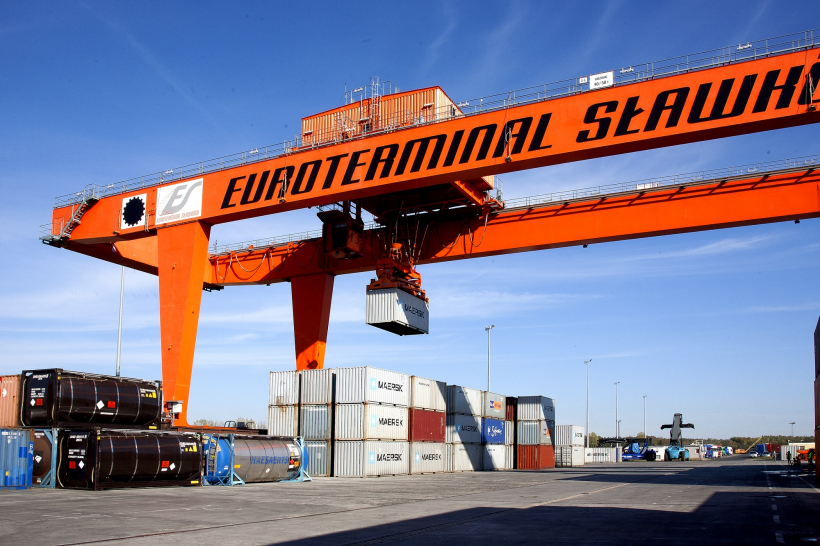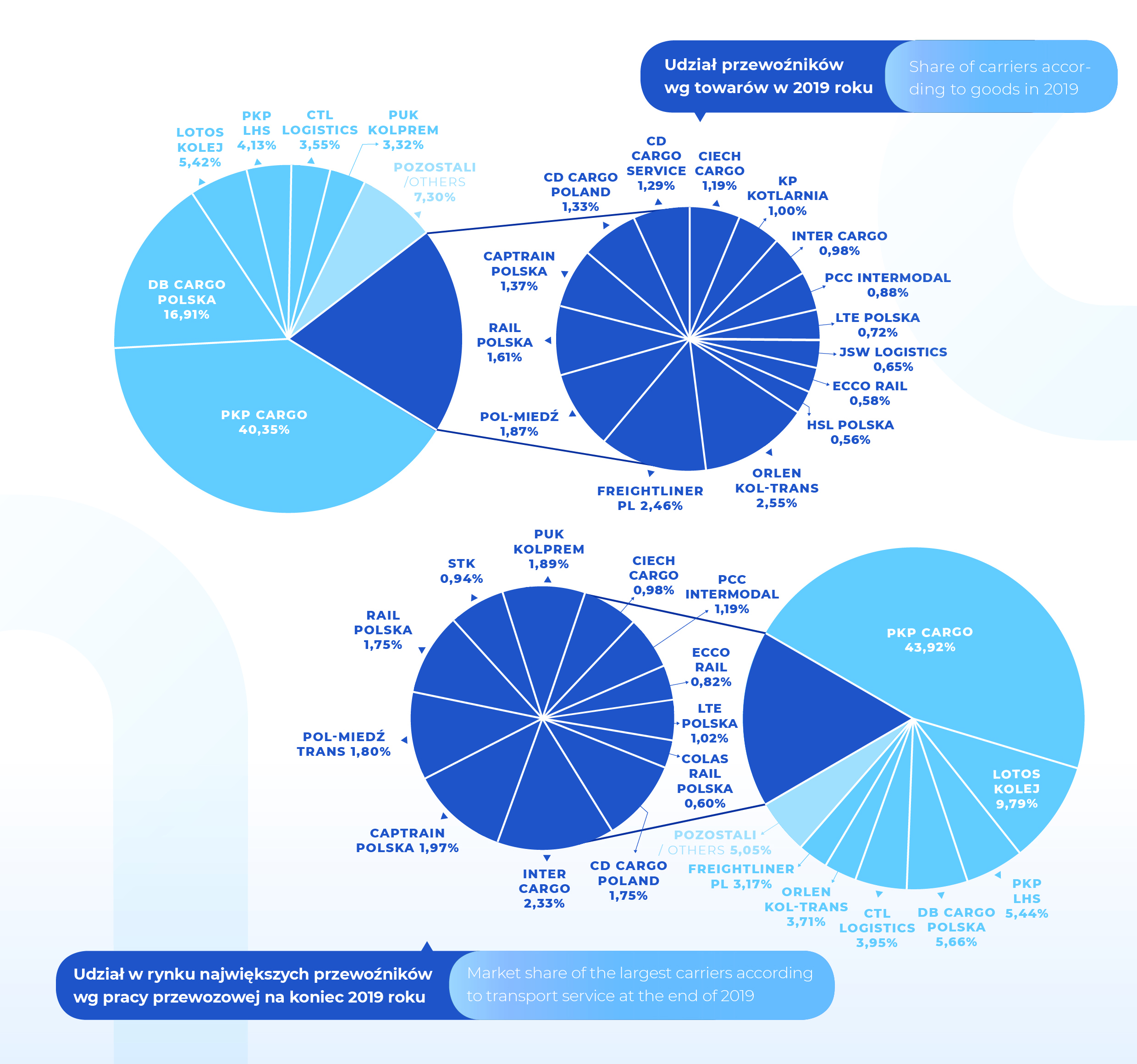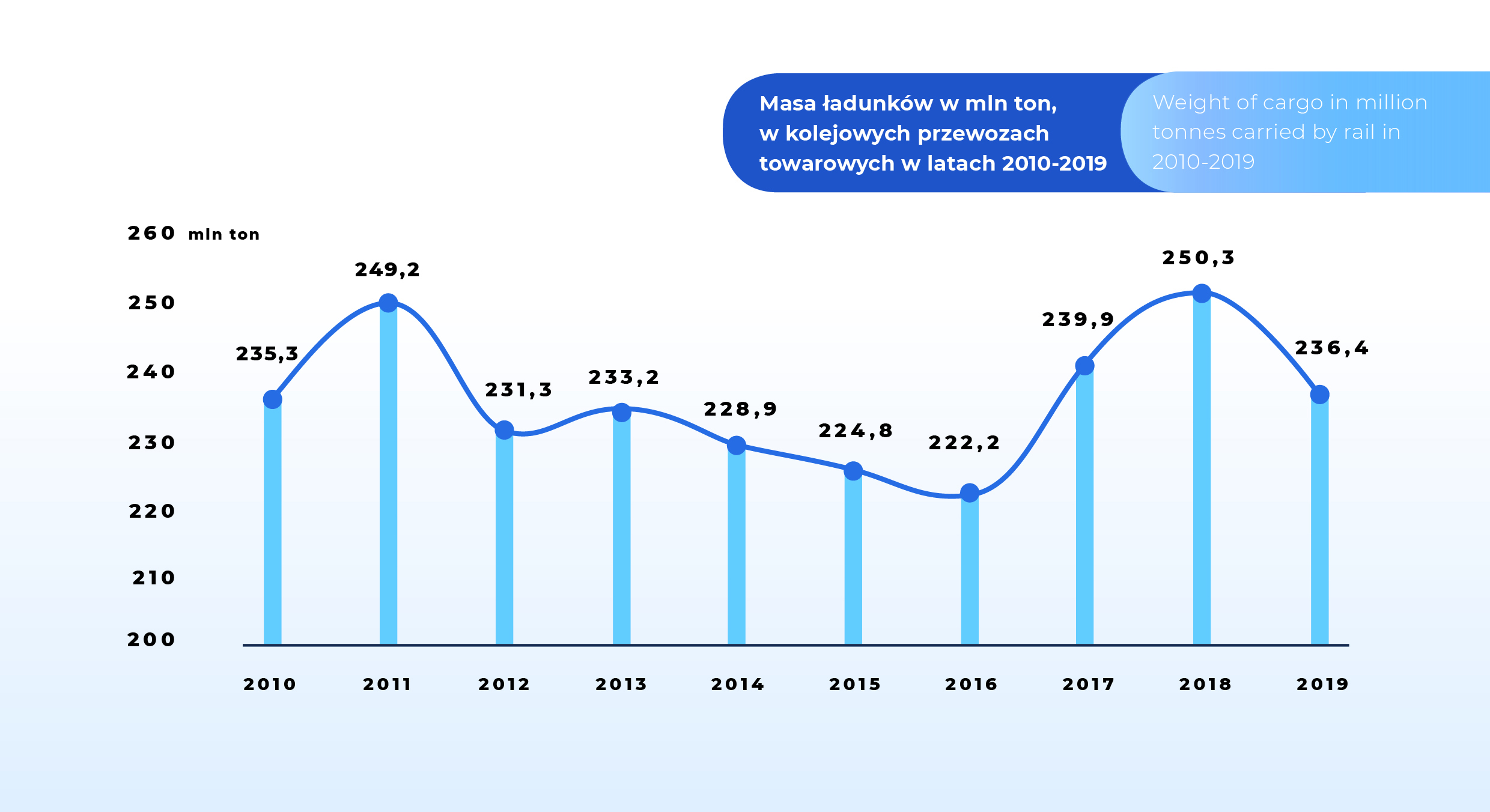
Sławków Euroterminal - transshipment terminal
Railways in Poland
December 29, 2020

Sławków Euroterminal - transshipment terminal
Transport market
In 2019, the following groups of commodities had the largest share in transport in terms of transported weight:
Carriers
The leader in the Polish market of cargo transport is PKP Cargo. In 2019, its market share according to the weight of transported cargo was 40.35%. In 2018, the company transported more than 109 million tonnes, which corresponded to an increase in transported weight by nearly 3 million tonnes in comparison to previous year. As regards other carriers, the largest growth was recorded by: PCC Intermodal, Captrain Polska and Orlen KolTrans. In 2019 international cargo transport was handled by 37 licensed carriers. In cross-border traffic (export, import and transit) nearly 78.01 million tonnes were transported and the transport service amounted to 25.1 billion tonne-km. In comparison to previous year, the transported weight of cargo decreased by 5.3%, while at the same time the transport service decreased by 5.2%. Companies from PKP group have the largest share in international transport. According to weight it is more than 59.3%, and according to transport service more than 57.2%. Companies whose share exceeded 2% were: DB Cargo Polska, CTL Logistics, Lotos Kolej, CD Cargo Poland, Inter Cargo and Captrain Polska.
For several years, lignite has had the largest share in the structure of international goods transport. The observed increase in the import of coal was an effect of an increased volume of this resource transported from the east, especially from Russia. In 2019, the main partners in the export of goods from Poland were: Germany, the Czech Republic, Austria, Slovakia, China, Italy and India. On the other hand, import exchange took place mainly between Russia, Ukraine, Belarus, Germany, the Czech Republic and China.

Intermodal transport
In 2019 intermodal transport developed very dynamically. Interest in this type of transport has been growing along with the increasing number of carriers providing services in this market segment. In 2019 intermodal carriers transported ca. 19.5 million tonnes of cargo. A record-breaking number of loading units, i.e. 1394 thousand, was reached. Nearly 1343 thousand were containers. In 2019 the largest scale of intermodal transport according to transported weight and transport service, similar to previous years, was achieved by PKP Cargo. The market share of that carrier according to weight was more than 44.1%, and according to transport service more than 49.1%. The significance of other companies on the intermodal market has been growing year on year. The following companies also had a significant share in terms of weight transported in intermodal transport in 2019: Captrain Polska, DB Cargo Polska, PCC Intermodal and LTE Polska. In total, they transported more than 39% of weight

Employment in the sector
In 2019 more than 28 thousand people worked in the cargo transport sector. The largest employer on the market is PKP Cargo (61% share). The joint of share of DB Cargo Polska and DB Cargo Spedkol was 4%. Ten companies employed more than 86% of all people working for cargo carriers. The largest occupational group among the employees directly connected with train traffic was train drivers, setters and rolling stock inspectors.